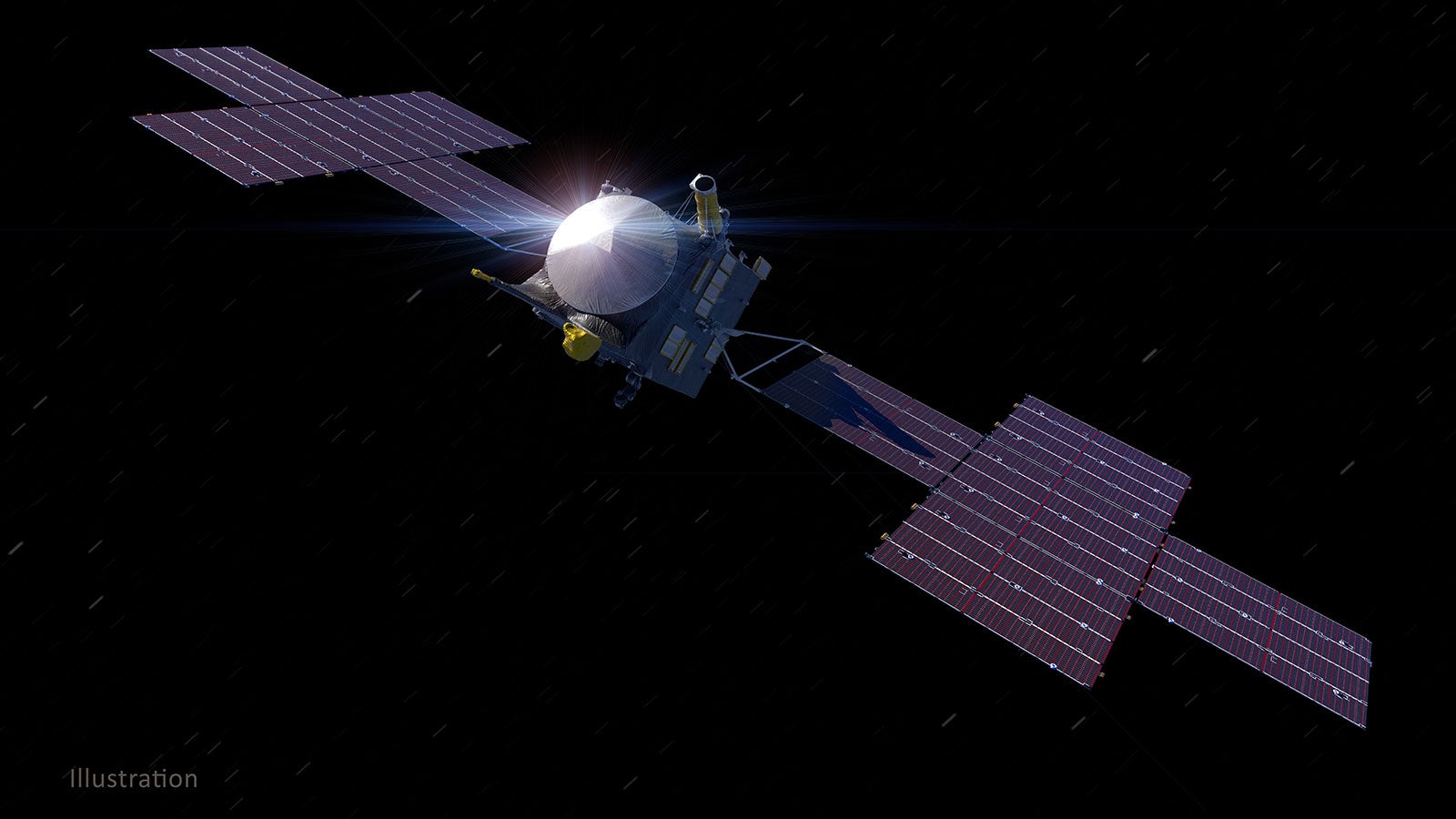
UPDATE: NASA launched the Psyche spacecraft at 10:19 am EDT on Oct. 13 at Kennedy Space Center in Florida. The original launch was delayed because of inclement weather.
Psyche’s goal is to perform 21 months of science, visiting the strange, metallic asteroid that bears the same name. Asteroid 16 Psyche orbits the main belt between Mars and Jupiter. This metal-rich object in particular has sparked interest because it may be the missing link in scientists’ understanding of the formation of our solar system’s planets. Scientists suspect it might be the exposed nickel-iron core of a planetesimal (an early planetary building block).
Studying such a planetesimal would it gives researchers a look inside the terrestrial planets. Because actually visiting a rocky planet’s metal core is impossible, the Psyche mission offers an excellent substitution. Alternatively, even if the asteroid is not an exposed core, its unique metallic composition could mean it’s an even stranger object than previously thought.
Rocky beginnings
The launch comes after the Psyche mission was delayed when NASA missed its 2022 launch window. In a previous press release, NASA stated the agency did not have enough time to complete the testing needed before the launch period.
The missed deadline resulted in an investigation into the cause by an Independent Review Board (IRB). The IRB later reported that contributors to the delay — many of which were due to or exacerbated by the pandemic — included software issues, late software delivery, communication failures between staff members and management, and staffing issues. The report also stated that many of the shortcomings were not unique to the mission but a reflection of broader institutional issues at JPL.
The journey
Psyche will have a 2.2 billion-mile (3.5 billion kilometers) commute to its target, relying largely on solar-electric propulsion. Throughout the six-year journey, large solar arrays will convert sunlight into electricity that will power the spacecraft’s thrusters, which will generate electromagnetic fields to accelerate xenon atoms — Psyche’s fuel — away from the craft, moving it gently forward.
Along the way, Psyche will fly close to Mars in 2026 for a gravity assist. The spacecraft will use the Red Planet’s gravity to increase its speed and redirect itself without tapping into its limited onboard propellants. At its closest encounter with Mars, it will reach 1,900 to 2,700 miles (3,000 to 4,400 km) above the planet.
Also on its journey to Psyche, the mission will test a new high-speed optical laser communications technology called Deep Space Optical Communications (DSOC) for potential use on future solar system missions.
Once the spacecraft reaches asteroid Psyche in August 2029, it will spend nearly two years orbiting the asteroid and gathering data, eventually coming within 47 miles (76 km) of the asteroid’s surface.
“I am ready to be ecstatic,” said Psyche principal investigator Lindy Elkins-Tanton of Arizona State University in a September 6 statement. “We all are, but we are not ecstatic yet. Let’s launch and establish communications — then we can scream, jump, and hug each other.”









